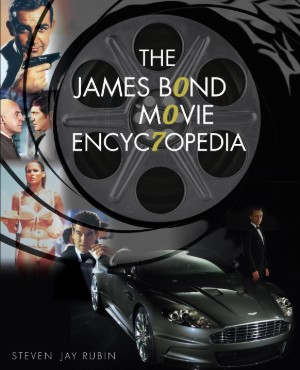(a.k.a. Stromberg Marine Research Laboratory): Huge spider-like amphibious structure located off the coast of Sardinia in The Spy Who Loved Me. It’s the centerpiece of the undersea city of the future conceived by billionaire shipping magnate Karl Stromberg (Curt Jurgens). Explained production designer Ken Adam, “The idea for Atlantis was not in the original script for The Spy Who Loved Me. Cubby [Broccoli], [director] Lewis Gilbert, and I went out to Okinawa, because we had heard about a Japanese structure that could rise out of the water.
“When we got there, it turned out to be a white elephant. It was something the Japanese government had spent $77 million on for Expo ’75, a huge floating exhibition hall called the Aquapolis. It looked like a big floating oil platform, and since it looked so much like an oil rig, I didn’t like it.
“It was gigantic, though, and at first I tried to make it work for us.” Adam brainstormed ways to augment the real location through the use of models and matte paintings. “But I never could get anywhere on that. It had an immense heliport on the top of the structure, which wasn’t necessary. You didn’t need a heliport that big.
“Since the Aquapolis was a big disappointment, I decided to design something entirely new. And for the interiors, I wanted to get away from my old straight-line concepts. This time I was going to use circles and ellipses, a concept partly influenced by our location scouting in Sardinia, where much of the architecture along the Costa Smeralda utilizes that style.”[1]
Adam found it interesting that his concepts ended up echoing the cutting-edge real-world design trends of the late 1970s. “As it turned out, this concept was in line with the future of design, in which we see a lot of plastic furniture and prefabricated housing in those shapes. All of the fish tanks in Atlantis were elliptical, the escape corridors featured elliptical exit ways, and Stromberg’s big shark pond was circular in shape.”
[1] Ken Adam, interview by Steven Jay Rubin, London, June 17, 1977.

